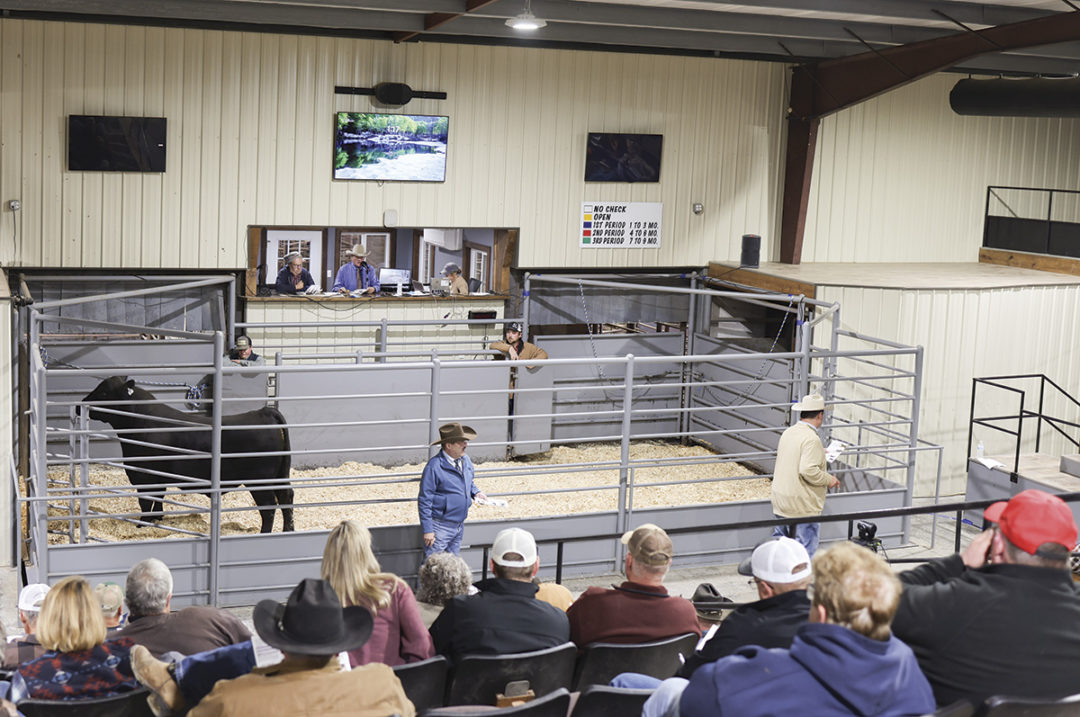Now is the time when producers are sorting through bull catalogs, tabbing pages and attending bull sales to purchase their next herd sires for the coming breeding season. The purchase of a bull is a significant investment, and the herd bull influences overall herd performance, fertility and their daughters’ productivity in the cow herd. Our goal is to have our cows produce one calf per year; however, bulls should have a significantly greater contribution to the calf crop, siring 25 to 60 calves.
Furthermore, bull selection can be the most powerful method of genetic improvement in the herd; however, low fertility, structural problems and low libido in breeding bulls can reduce the percent calf crop weaned. A lot of time and effort is put into the selection of our bull battery; therefore, ensuring we are managing and preparing for a successful breeding season when they arrive on the ranch is essential.
Bull selection
Prior to buying a bull, producers should consider asking themselves a few questions, such as what they need to improve, what their breeding/marketing goals are, what traits may directly impact profitability and do they have a budget in place.
Sorting through all the information in a bull catalog may be overwhelming, but understanding and utilizing expected progeny differences (EPDs) can be a valuable tool for determining which bulls are genetically superior. Reviewing the Beef Sire Selection Manual from the University of California – Davis can help explain these different traits and how they can be used to compare animals within a breed to another. To answer those questions above, producers may be led to evaluate traits that are economically relevant to their enterprise. Economic indexes for beef sire selection are “a collection of EPDs weighted by their economic value such that traits with greater impact on production goals have a larger economic weight associated with them.” Learn more about them in this publication from the University of Nebraska – Lincoln.
In addition, visually appraise bulls for structural soundness when you actually go see them. While utilization of EPDs and genetic selection is a key component in bull selection, finding a bull with a good temperament and soundness is also important. Remember, bulls need to be able to move and cover cows, so structural soundness is key.
Another point to consider is communicating with breeders and seeking their opinion and insight related to the selection of bulls to meet your breeding objectives. They are a tremendous resource and can help you identify bulls that would meet your goals. Furthermore, set a budget and give yourself options. Have a list of bulls you are considering and have flexibility if bulls exceed your budget limit – you'll still have options to consider that will meet your criteria.
Nutrition prior to the breeding season
When it comes to our younger bulls that were purchased or managed at the ranch, we often recommend getting those bulls adapted to their new environment and making sure they are maintained on a good plane of nutrition prior to turnout. Yearling bulls should be at a body condition score of 5.5 to 6.5 (9-point scale) at the start of the breeding season. If yearling bulls are overconditioned, bodyweight loss during the breeding season will most likely occur and may impair breeding performance.
The timing of weight loss will be important to consider if you are stepping bulls down to a forage diet. This can be accomplished over several weeks to help reduce the possibility of metabolic issues or weight loss that may impact semen characteristics. Keep in mind that mature sperm is produced over a 60-day period before ejaculation; therefore, nutritional effects of over- or underfeeding may have carryover effects on sperm quantity and quality.
Generally, mature bulls can be maintained on a 100% forage diet that consists of roughly 7% crude protein (CP) and about 50% total digestible nutrients (TDN). That would target a daily intake of about 1.5% to 2% of bodyweight or roughly 40 pounds of dry matter per day. Whereas, in our young or thin bulls, a diet should consist of roughage at 2% of bodyweight but with a higher CP and energy-dense diet (7.5%-9% CP and 55%-65% TDN) to help encourage gains. For yearling bulls, we have provided some examples of diets for maintenance as well as targeting gains in a 60- or 90-day time frame. Those example diets can be found in our NebGuide for breeding bull management.
A good vitamin and mineral program should also be incorporated for successful animal growth and breeding performance. Understanding the quality of your forages and supplements will be important to consider as you develop rations and a nutritional management plan. Local extension personnel are a great resource to assist in forage testing.
Reproductive management of bulls
Management and preparation prior to the breeding season should also include scheduling a breeding soundness examination to ensure fertility and that bulls are satisfactory potential breeders. Because a variety of factors can impact a bull’s fertility, testing both young and mature bulls 60 days prior to the breeding season is strongly encouraged to know where all your bulls stand and allow time for new herd sires to be acquired, if needed.
Keep in mind that sperm production is a continuous process. If any damage has been endured over winter or from the past breeding season, the results of a breeding soundness examination will change; however, in general, it takes roughly 60 days for sperm production to recover. It is important to consider that a breeding soundness examination is a snapshot in time of fertility. Therefore, it’s recommended to test bulls annually before the start of the breeding season to ensure all bulls are acceptable potential breeders.
Conversely, successfully passing a breeding soundness examination does not mean a bull may not fail a subsequent breeding soundness examination. So testing bulls annually, or generally a month or two prior to the breeding season, is recommended.
Moreover, it is important to ensure bulls have met other health considerations (including deworming, fly control or vaccination strategies) and are included in the overall herd health program. Producers should develop a relationship with their local veterinarian to determine the best management practices for their region. If you are introducing new bulls to your operation, also consider biosecurity measures – separating new animals for a short period of time may be advantageous.
In summary, selection and management of bulls can have a significant impact on the productivity and profitability of beef cow-calf operations. It is important to select bulls that have a good health program, have passed their breeding soundness examination and have been maintained on a proper diet. Furthermore, consider incorporating the use of EPDs to improve traits that are of economic value to your operation and meet the selection goals for your herd.









